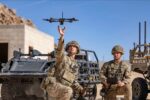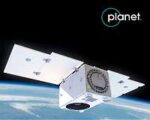The U.S. Army is on track to complete the initial missile loadout for its first operational Long-Range Hypersonic Weapon (LRHW) battery—known as Dark Eagle—by December 2025. This milestone marks a pivotal step in fielding a new class of ultra-fast conventional strike weapons capable of penetrating advanced air defenses and delivering precision effects at intercontinental ranges.
Dark Eagle Overview: A Strategic Hypersonic Capability
The Dark Eagle system is the U.S. Army’s designation for its LRHW program—a ground-launched hypersonic weapon designed to deliver precision strikes at ranges exceeding 2,775 km (1,725 miles). The system comprises three main components:
- A mobile Transporter Erector Launcher (TEL) mounted on a modified M870 trailer
- A Battery Operations Center for command and control
- The Common Hypersonic Glide Body (C-HGB) mounted atop a two-stage booster
Developed under the joint oversight of the U.S. Army Rapid Capabilities and Critical Technologies Office (RCCTO), Lockheed Martin serves as the prime integrator for the weapon system. The C-HGB itself is co-developed with Sandia National Laboratories and manufactured by Dynetics.
Deployment Timeline and Milestones
The first LRHW battery—part of the 5th Battalion, 3rd Field Artillery Regiment under I Corps—is stationed at Joint Base Lewis-McChord in Washington State. The unit received its full complement of launchers and support vehicles in September 2021 but has been awaiting live missiles due to delays in flight testing and production.
According to recent statements from Lt. Gen. Robert Rasch Jr., head of RCCTO, final integration and delivery of live missiles will be completed by December 2025. This follows multiple test delays stemming from technical issues with booster stages and ground support equipment.
Once fully armed, each LRHW battery will consist of four TELs carrying two missiles each—giving a total salvo capacity of eight hypersonic rounds per battery.
Technical Challenges and Testing Delays
The path to fielding Dark Eagle has not been without setbacks. Several planned flight tests were postponed or scrubbed over the past three years due to pre-launch anomalies or ground equipment malfunctions:
- An August 2023 test was aborted due to booster stack integration issues
- A March 2024 test was delayed following telemetry failures during countdown
Despite these hurdles, RCCTO officials maintain that component-level testing has validated key subsystems including thermal protection materials and guidance packages. A successful all-up round flight test is expected before year-end FY2025.
Strategic Implications in Indo-Pacific Posture
The deployment of LRHW batteries aligns closely with U.S. Indo-Pacific Command’s strategy to counterbalance Chinese anti-access/area-denial (A2/AD) capabilities across the First Island Chain. With a range exceeding most current ballistic systems in theater—and traveling at speeds above Mach 5—the Dark Eagle offers rapid strike potential against time-sensitive targets such as mobile missile launchers or command nodes.
However, basing options remain politically sensitive. While Guam is considered a likely candidate for forward deployment post-IOC (Initial Operational Capability), allies such as Japan or the Philippines have not formally agreed to host hypersonic assets on their soil due to escalation concerns with China.
Industrial Base and Production Outlook
The LRHW program leverages an industrial team led by Lockheed Martin Missiles & Fire Control with significant contributions from Dynetics (C-HGB fabrication), Northrop Grumman (booster motors), Leidos (ground support software), and Sandia Labs (aero design). In FY2024 alone, Congress allocated over $944 million toward continued development and procurement under Program Element PE0604117A.
Looking ahead, Lockheed Martin has disclosed plans to scale production capacity at its Courtland facility in Alabama while Dynetics expands glide body output at its Huntsville site. These efforts aim to support not only U.S. Army requirements but also potential Navy variants under the Conventional Prompt Strike (CPS) program slated for submarine launch platforms like Virginia-class SSNs by late this decade.
Outlook Toward Full Operational Capability
If current timelines hold—and assuming successful validation during upcoming tests—the first operational firing unit could reach IOC status by mid-to-late FY2026. Future batteries are expected as part of Multi-Domain Task Forces supporting joint fires integration alongside Air Force AGM-183 ARRW alternatives or future air-breathing hypersonics like HACM.
The arrival of Dark Eagle represents more than just speed—it signifies doctrinal shifts toward long-range precision fires as central pillars of deterrence strategy in contested theaters where traditional air dominance may be challenged or denied.










